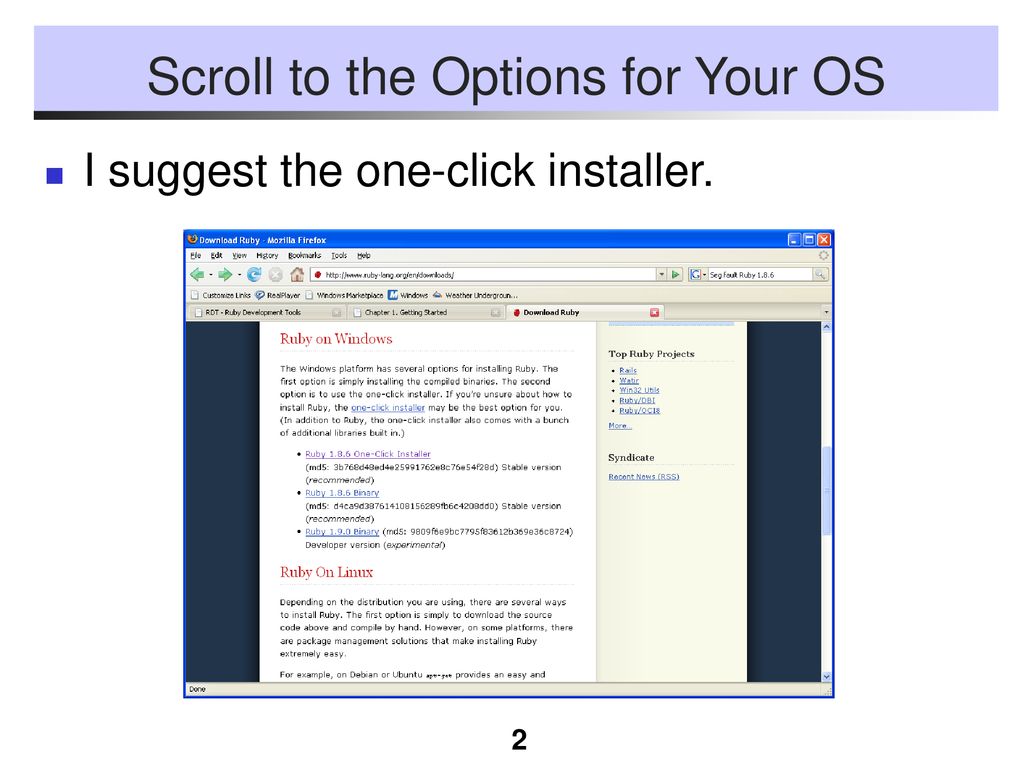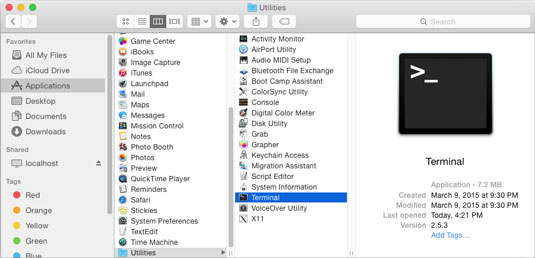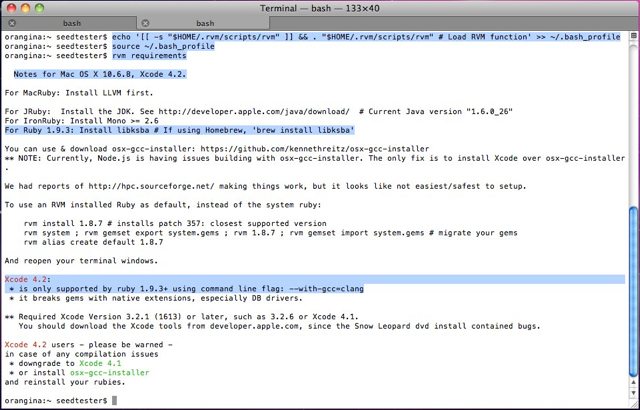- Install Ruby Mac Osx
- Install Ruby Macos High Sierra
- Install Ruby Mac Os
- Install Ruby 2.4 Mac Os
- Mac Os Update Ruby
- Update Ruby On Mac
- Install Ruby In Mac
Install Homebrew
Paste that in a macOS Terminal or Linux shell prompt.
The script explains what it will do and then pauses before it does it. Read about other installation options.
What Does Homebrew Do?
Homebrew installs the stuff you need that Apple (or your Linux system) didn’t.
Homebrew installs packages to their own directory and then symlinks their files into
/usr/local.Homebrew won’t install files outside its prefix and you can place a Homebrew installation wherever you like.
It's all Git and Ruby underneath, so hack away with the knowledge that you can easily revert your modifications and merge upstream updates.
Homebrew complements macOS (or your Linux system). Install your RubyGems with
gemand their dependencies withbrew.'To install, drag this icon...' no more.
brew caskinstalls macOS apps, fonts and plugins and other non-open source software.Donate to Homebrew
Homebrew Blog
Analytics Data
Homebrew was created by Max Howell. Website by Rémi Prévost, Mike McQuaid and Danielle Lalonde.
1 In your browser, go to Atom Installer and click the Download for Mac button. Atom is a free, powerful code editor that can be used for programming many different computer languages. It works well with Ruby. Depending on the settings of your browser, the Atom download archive may automatically uncompress or a zip file may be placed in your Downloads folder. I've written an in depth guide to installing Ruby on Rails on Mac OS X 10.9 Mavericks. It's here: Install Ruby on Rails Mac OS X Mavericks. It explains how to set up the Mac (with Xcode Command Tools), install Ruby with RVM (the Ruby Version Manager), and install Rails, with advice about updating important gems and setting up a professional development environment.
- Older versions of OS X are mostly compatible so follow along as far as you can and then Google search for any problems you run into. There are plenty of people who have documented solutions for them. Now that we have Homebrew installed, we can use it to install Ruby.
- If you do not want to grant RubyGems admin privileges for this process, you can tell RubyGems to install into your user directory by passing either the -user-install flag to gem install or by configuring the RubyGems environment. The latter is in our opinion the best solution.
- Discover how to install and configure Ruby on Rails 6 on a Windows or Mac computer. This practical course covers everything you need to know to get Ruby on Rails, MySQL, and all of the supporting software up and running.
This is a tutorial on how to install Ruby 2.0.0 on Mac OS X 10.8 Mountain Lion.
1. Install Xcode and the Command Line Tools
If you don’t have it installed I suggest you install Xcode from the Mac App Store and install the command line tools in Xcode Preferences -> Downloads.
Otherwise if you don’t want to do that you can download the Xcode standalone command line tools for Mountain Lion at https://developer.apple.com/downloads/index.action (Note: You will have to login with your Apple Id.).

2. Install Homebrew
Now run:
If you get the error:
Run the following:
and
Install Ruby Mac Osx
3. Install RVM
After this is complete execute the following in order to use RVM in your current shell:
4. Add the following to your ~/.profile in order to source RVM everytime you run Terminal.app:


5. Check RVM Requirements
Note the “Missing required packages: …” statement.
If you have any missing required packages you will need to install them before continuing by running brew install
For example, here is the output I had:
If you need to install apple-gcc42 and get an error:
Run the following:
If you get an error after running this:

Run the following instead to repair:
Now you can continue and install apple-gcc42:
From the “Missing required packages: …” line above, for example I can now execute the following:
6. Run brew doctor again to make sure everything checks out
Execute the following:
If you get an error or warning about your PATH. Such as:
Open your ~/.profile and add the following line to the top (or bottom, it shouldn’t matter):
Run brew doctor to check all is swell before continuing.
7. It’s now time to install Ruby 2.0.0:
First run the following commands:
followed by:
If you don’t get any errors you can finally install Ruby 2.0.0:
Install Ruby Macos High Sierra
To set as your current version of Ruby run the following command:
To make it the default Ruby:
or
Now every time you open Terminal.app Ruby 2.0.0 will be default. You can always check which version of Ruby you have using the following command:

Install Ruby Mac Os
and where it’s located executing the command:
Install Ruby 2.4 Mac Os
I hope this tutorial was useful. You are now setup to run Ruby 2.0.0 on Mac OS X 10.8 Mountain Lion. Shall you have any issues post a comment below and I’ll try and help you out.
Mac Os Update Ruby
– Chris
Update Ruby On Mac
The Latest
Install Ruby In Mac
How I Went from Wine Sales Connoisseur to Account Executive
29 October, 2020Virtual Event Recap: Data Prep in Tableau Desktop
28 October, 2020Parse and Pivot Concatenated Datasets Using Only Tableau Desktop
27 October, 2020Local Scheduling and Flow Refreshes with Tableau Prep
21 October, 2020